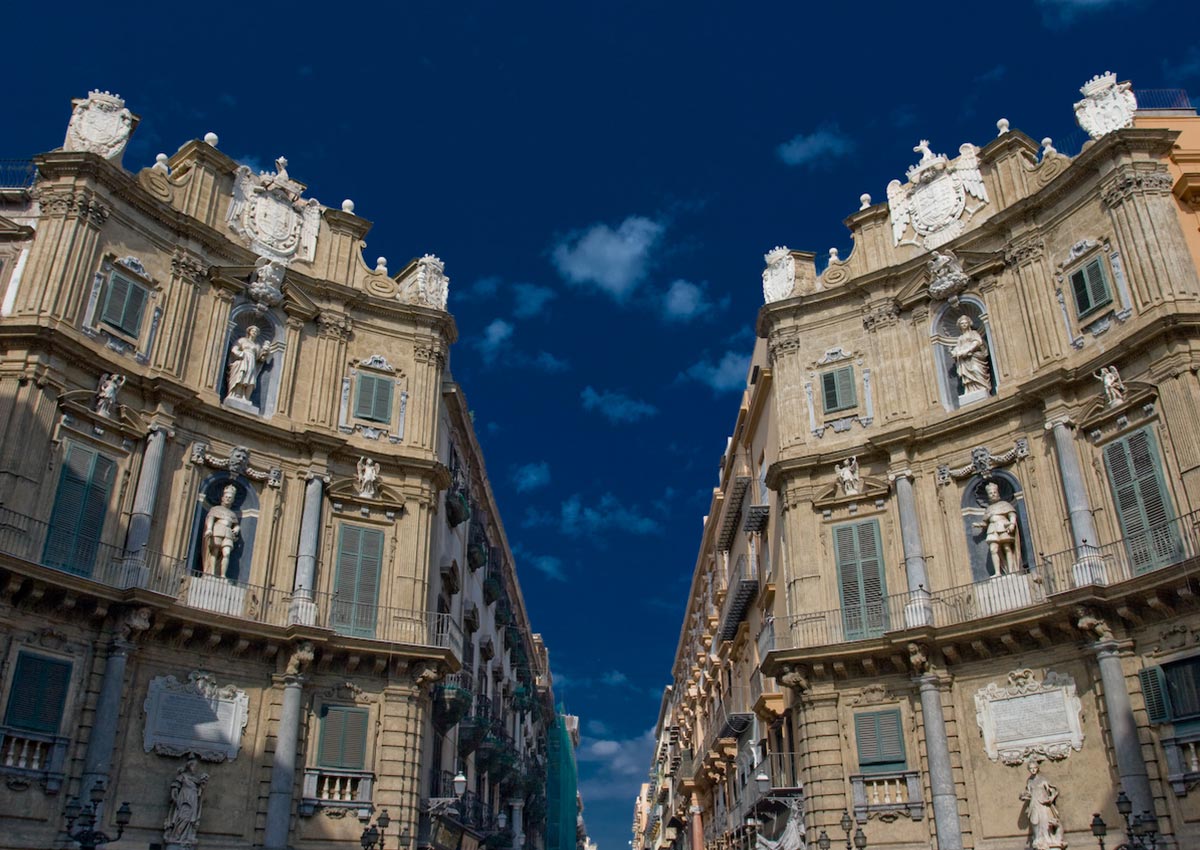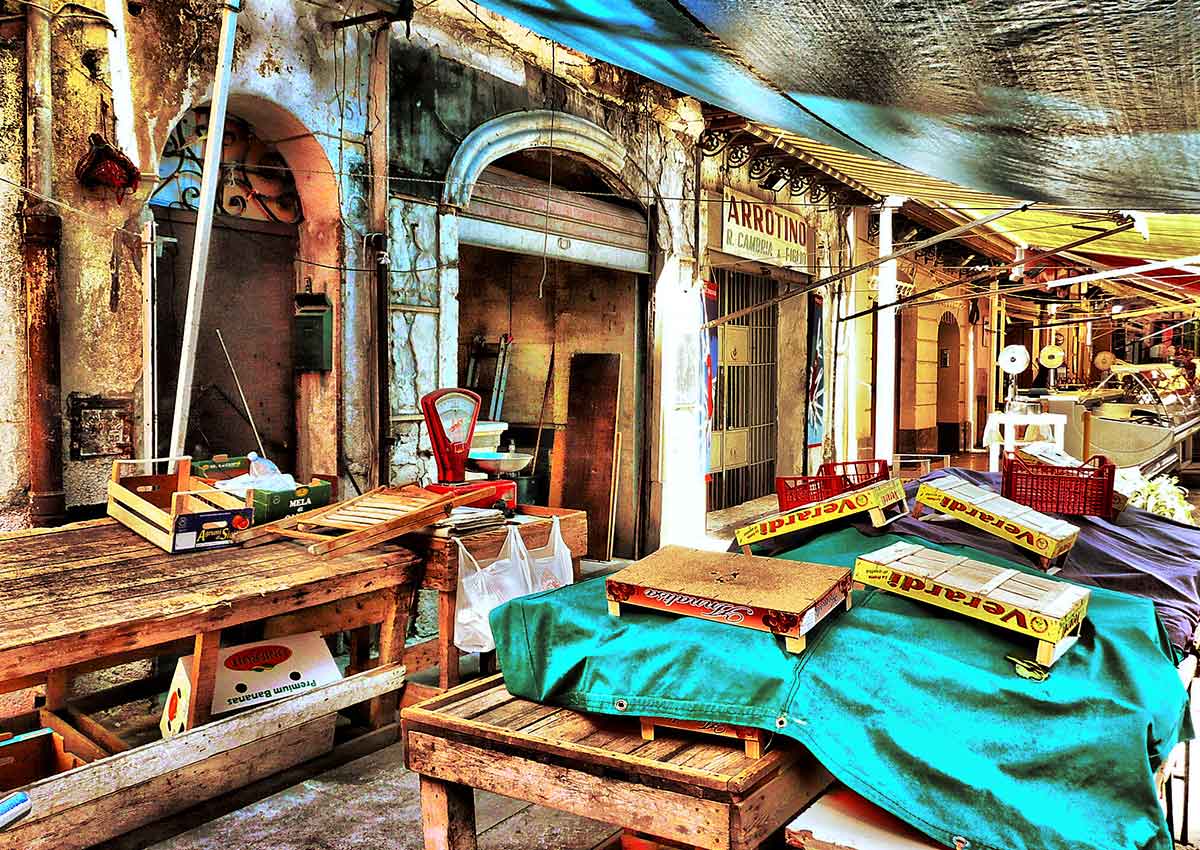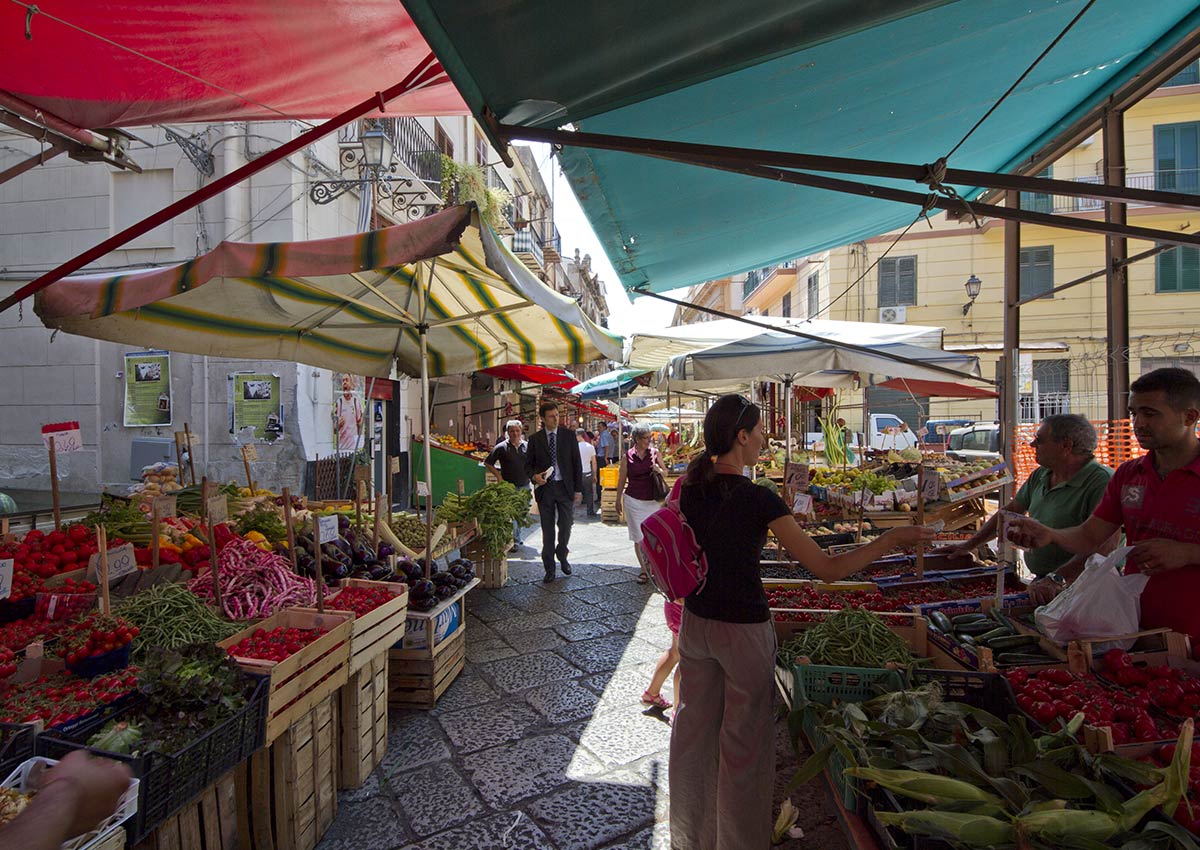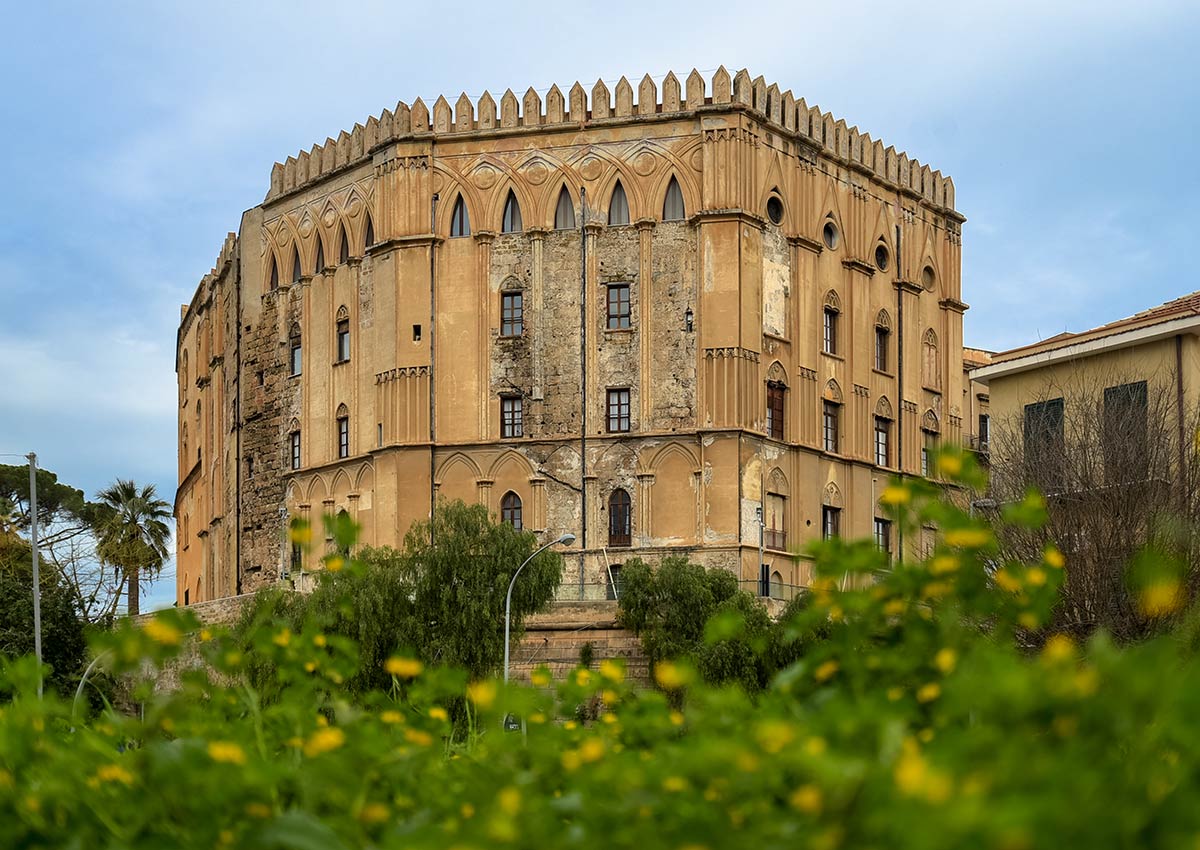
Palermo Cathedral
Built between 1179 and 1185, the Cathedral synthesizes numerous styles and patterns into one single architectural body, thanks to the melting of several and diverse populations over the centuries. Inside, visitors can admire the tombs of the kings that governed the city. Among the most important ones, Frederick II and Roger II tombs stand out.
The crypt preserves the ‘Tesoro della Cattedrale’ (n.d.r. Treasure of the Cathedral) including an astonishing collection of artworks dating back to a period between the Norman age and the 19th century.

I Quattro Canti
The so called “Quattro Canti” (n.d.r. Four Corners) indicates the octagonal square generated by the crossroad of the two main roads in Palermo: via Maqueda and via Vittorio Emanuele.
The intersection of these two roads divides the city in four sections that are called “Mandamenti” (n.d.r Districts).
Each one of them is represented by a building that grows in three levels.
The first level, in Doric style, displays the myth of the four seasons, represented by the Roman deities ‘Eolo’, ‘Venere’, ‘Cerere’ and ‘Bacco’. In the upper level, in Ionian style, there are four statues representing four kings. Finally, in the highest level in a composite style, the statues of the four Saint Protectors of the corresponding districts are erected in defense of each part of the city: S. Oliva, S. Cristina, S. Agata and S. Ninfa.

Ballarò Market
Ballarò is the oldest and biggest market of the city. Fishmongers, greengrocers, butchers and spices pedlars sell both local and import products and first fruits. The birth of the market goes back to the age of the Arab domination, whose aspect, customs, buying and selling practices, colors, flavors, and the tradition to fill streets and squares with stalls, baskets and colorful canopies are still visible today.

Vucciria Market
The Vucciria Market was called “Bucceria grande” in ancient times, to distinguish it from other secondary markets. Indeed, it originally used to be the most important “piazza di grascia”, or, in other words, the grocery marketplace of the old town of Palermo. The term “Bucceria” stems from the French word “Boucherie”, which means “butchery”, since the market was originally intended for the sale of meat. Today, visitors can find almost anything there: meat, fish, fruit and vegetables.

Palazzo dei Normanni and Cappella Palatina
The Royal Palace, also known as Norman Palace, is the current headquarter of the Sicilian Regional Assembly. It is a monument of inestimable value dating back to the Arab domination, as well as the most ancient noble mansion in Europe. It is located in the highest part of the city center and it houses inside the stunning Palatine Chapel, built in 1132 under the reign of Roger II and tastefully adorned with Byzantine mosaics.

Piazza Sant’Anna and Chiesa di Sant’Anna La Misericordia
The wonderful Baroque Church of ‘Sant’Anna La Misericordia’ rises in the homonymous square in the historic center of Palermo. Due to its sinuous shape, the overlapping of styles and the monumental nature of its columns, it is considered one of the best and most eye-catching masterpieces of the Palermitan Baroque scenario. Internally, visitors can admire beautiful paintings, antique statues and priceless frescos.

